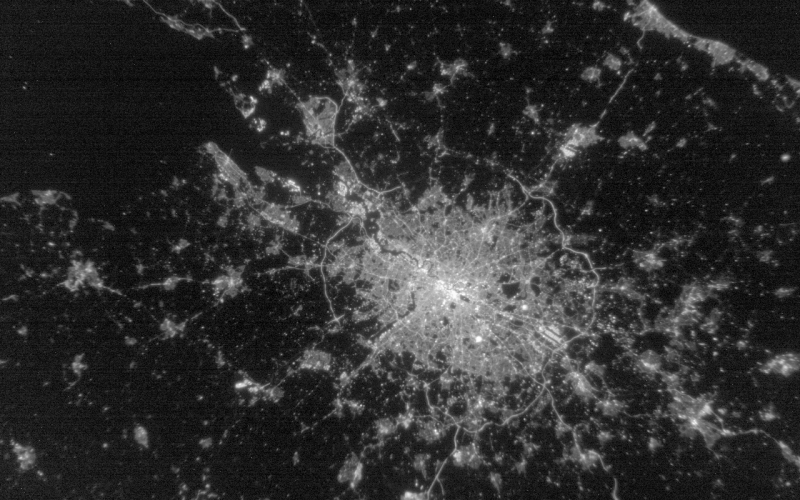Cumulos Video
An Aerospace-developed small instrument built inexpensively using commercial cameras could prove to be a game-changer for weather forecasting, environmental monitoring, and other operations involving Earth-surface observation.
Called the CubeSat Multispectral Observing System (CUMULOS), the small package contains a visible wavelength camera, a short-wavelength infrared camera, and a long-wavelength infrared microbolometer camera. It was launched in in November, 2017, and this year began transmitting nighttime lights images from its orbit 280 miles above the Earth’s surface.
“CUMULOS has proven that CubeSats can provide good-quality, higher-resolution nighttime images of city lights and other bright targets at a fraction of the cost of larger satellites by using inexpensive commercial cameras and their increasingly advanced focal plane arrays,” said Dee Pack, principal investigator for the CUMULOS mission and director of Aerospace’s Remote Sensing Department. “By trading wide area coverage for higher resolution, a CubeSat platform can be a real game changer for urban geographers and for nighttime remote sensing research.”
The CUMULOS instrument is flying as a secondary payload on the Integrated Solar Array and Reflectarray Antenna (ISARA) CubeSat – a mission managed by NASA’s Jet Propulsion Laboratory (JPL), operated by Aerospace, and sponsored by NASA’s Small Spacecraft Technology Program. It is the first infrared imaging sensor launched on a CubeSat.
CUMULOS is expected to be able to measure surface temperature, detect fires and other environmental hotspots, and take cloud cover pictures, along with providing nighttime lights imaging. CUMULOS’ on-orbit calibration techniques allow comprehensive analysis of light patterns, which can be used to measure urban growth and energy usage, and to detect the spread of power grids in developing countries. Other applications are currently being explored.
Being able to provide this information from a CubeSat platform is expected to allow new commercial companies, universities, and other research organizations to work in areas that were previously not open to them because of the high cost of larger satellites.




